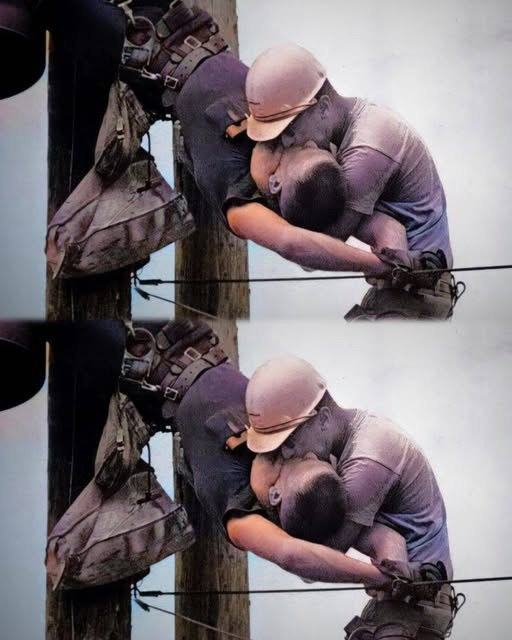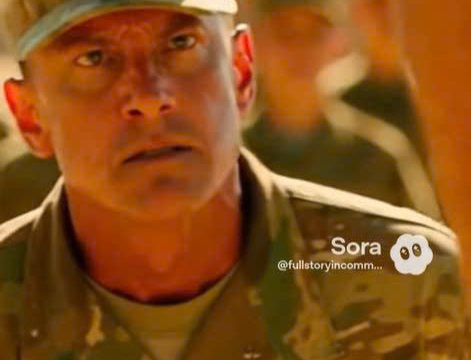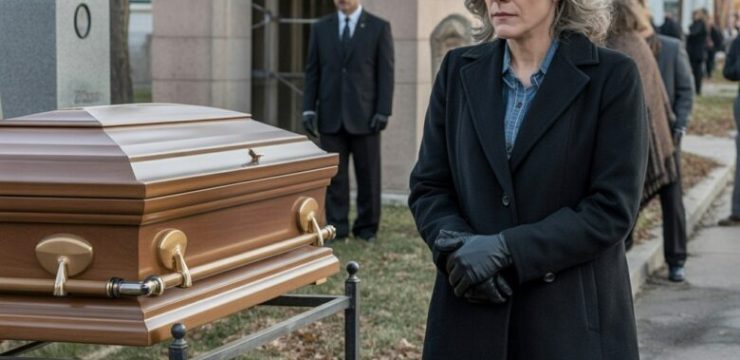In July 1967, what began as a routine day for a photographer in Jacksonville, Florida, turned into a defining moment that would change his life and capture one of the most powerful images in American journalism. Rocco Morabito, a staff photographer for the Jacksonville Journal, was driving near West 26th Street, feeling uninspired and bored as he headed toward a minor assignment.

He had no way of knowing that in a matter of minutes he would stumble upon a scene that would not only save a man’s life but also cement his place in history as the creator of a Pulitzer Prize-winning photograph. That afternoon, two electrical linemen were performing routine maintenance on a section of the power grid. Their work was demanding but ordinary, part of the daily tasks that kept electricity flowing safely across the city. One of the men, Randall Champion, accidentally brushed against a live wire carrying over 4,000 volts of electricity. In an instant, the charge surged through his body. His heart stopped immediately, leaving him unconscious and lifeless.
To put this into perspective, an electric chair, historically used for executions, delivers about 2,000 volts—Champion had absorbed more than double that amount. Suspended at the top of the pole, Champion’s body was kept from falling only by his safety harness. Below him, his co-worker J.D. Thompson saw the horrifying accident unfold. Without hesitation, Thompson climbed the pole, balancing himself in a dangerous position, and began administering mouth-to-mouth resuscitation directly on the utility pole. His quick thinking and courage were the only things standing between Champion and death. Meanwhile, Morabito, noticing the commotion and the small crowd gathering below, stopped his car and rushed toward the scene.
He instinctively grabbed his camera and began photographing the desperate rescue attempt. What his lens captured was raw, human, and unforgettable—Thompson pressing his mouth against his colleague’s, high above the street, fighting to breathe life back into him. The image was unlike anything people had ever seen: not staged, not planned, but a real-life drama of courage, sacrifice, and hope. Moments later, Champion showed faint signs of life, breathing again after Thompson’s efforts. Bystanders quickly rushed to help, and when the ambulance arrived, paramedics stabilized Champion and transported him to the hospital.
Against the odds, he survived, thanks to the bravery and quick action of his co-worker. For Thompson, it was simply what needed to be done. For Champion, it was a second chance at life. For Morabito, it was the photograph that changed everything. Initially, Morabito worried he would face trouble at work. He had been assigned to cover a different event, and missing it might have led to criticism or even disciplinary action. But once his editors saw the image, they immediately realized its power. The photograph was printed in the Jacksonville Journal and quickly spread to newspapers around the world. Readers were stunned by its intensity and humanity.
The photograph became known as “The Kiss of Life,” a name that perfectly described the life-or-death moment captured forever on film. In 1968, Morabito received the Pulitzer Prize for Spot News Photography, the highest honor in the field, for the picture that transformed a routine assignment into a career-defining achievement. The image has since become one of the most iconic in photojournalism, studied in classrooms, displayed in galleries, and remembered by generations. Decades later, it remains a symbol of courage, loyalty, and the unpredictable moments when ordinary people become heroes. For Thompson, the act of saving his colleague’s life embodied the dedication and bravery often overlooked in dangerous professions like electrical line work. For Champion, it meant surviving an accident that by all logic should have been fatal.
And for Morabito, it was proof of the power of being in the right place at the right time with a camera ready. His photograph captured not just an act of rescue but also the essence of human resilience and compassion. The story of “The Kiss of Life” reminds us that sometimes history is not written in grand events or monumental speeches, but in the quiet, desperate moments when one person refuses to give up on another. It shows the fragility of life, the importance of quick action, and the way a single image can inspire millions. What began as boredom for a photographer driving down the street became one of the most enduring photographs of the twentieth century. In that moment, a life was saved, a hero was revealed, and a photographer’s career was forever defined by the split-second decision to stop, look, and capture history as it unfolded before his eyes.





